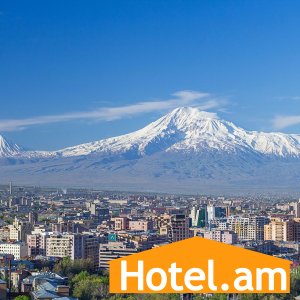Mount Ararat
Mount Ararat is volcanic massif in extreme eastern Turkey, overlooking the point at which the frontiers of Turkey, Iran, and Armenia converge..
Ararat consists of two peaks. Great Ararat, above sea level, is the highest peak in Turkey and the Armenian plateau. Both Great and Little Ararat are the product of eruptive volcanic activity. The snowcapped conical peak of the Great Ararat offers a majestic sight. The snowline varies with the season, retreating to 14,000 feet above sea level by the end of the summer.
Ararat traditionally is associated with the mountain on which Noah’s Ark came to rest at the end of the Flood. The name Ararat, as it appears in the Bible, is the Hebrew equivalent of Urardhu, or Urartu, the Assyro-Babylonian name of a kingdom that flourished between the Aras and the Upper Tigris rivers from the 9th to the 7th century BCE. Ararat is sacred to the Armenians, who believe themselves to be the first race of humans to appear in the world after the Deluge. A Persian legend refers to the Ararat as the cradle of the human race. There was formerly a village on the slopes of the Ararat high above the Aras plain, at the spot where, according to local tradition, Noah built an altar and planted the first vineyard. Above the village Armenians built a monastery to commemorate St. Jacob, who is said to have tried repeatedly but failed to reach the summit of Great Ararat in search of the Ark. In 1840 an eruption and landslide destroyed the village, the monastery of St. Jacob, and a nearby chapel of St. James, and it also killed hundreds of villagers.
Local tradition maintained that the Ark still lay on the summit but that God had declared that no one should see it. In September 1829, Johann Jacob von Parrot, a German, made the first recorded successful ascent. Since then Ararat has been scaled by several explorers, some of whom claim to have sighted the remains of the Ark.
Ararat consists of two peaks. Great Ararat, above sea level, is the highest peak in Turkey and the Armenian plateau. Both Great and Little Ararat are the product of eruptive volcanic activity. The snowcapped conical peak of the Great Ararat offers a majestic sight. The snowline varies with the season, retreating to 14,000 feet above sea level by the end of the summer.
Ararat traditionally is associated with the mountain on which Noah’s Ark came to rest at the end of the Flood. The name Ararat, as it appears in the Bible, is the Hebrew equivalent of Urardhu, or Urartu, the Assyro-Babylonian name of a kingdom that flourished between the Aras and the Upper Tigris rivers from the 9th to the 7th century BCE. Ararat is sacred to the Armenians, who believe themselves to be the first race of humans to appear in the world after the Deluge. A Persian legend refers to the Ararat as the cradle of the human race. There was formerly a village on the slopes of the Ararat high above the Aras plain, at the spot where, according to local tradition, Noah built an altar and planted the first vineyard. Above the village Armenians built a monastery to commemorate St. Jacob, who is said to have tried repeatedly but failed to reach the summit of Great Ararat in search of the Ark. In 1840 an eruption and landslide destroyed the village, the monastery of St. Jacob, and a nearby chapel of St. James, and it also killed hundreds of villagers.
Local tradition maintained that the Ark still lay on the summit but that God had declared that no one should see it. In September 1829, Johann Jacob von Parrot, a German, made the first recorded successful ascent. Since then Ararat has been scaled by several explorers, some of whom claim to have sighted the remains of the Ark.
Information
Users of Guests are not allowed to comment this publication.
Users of Guests are not allowed to comment this publication.




